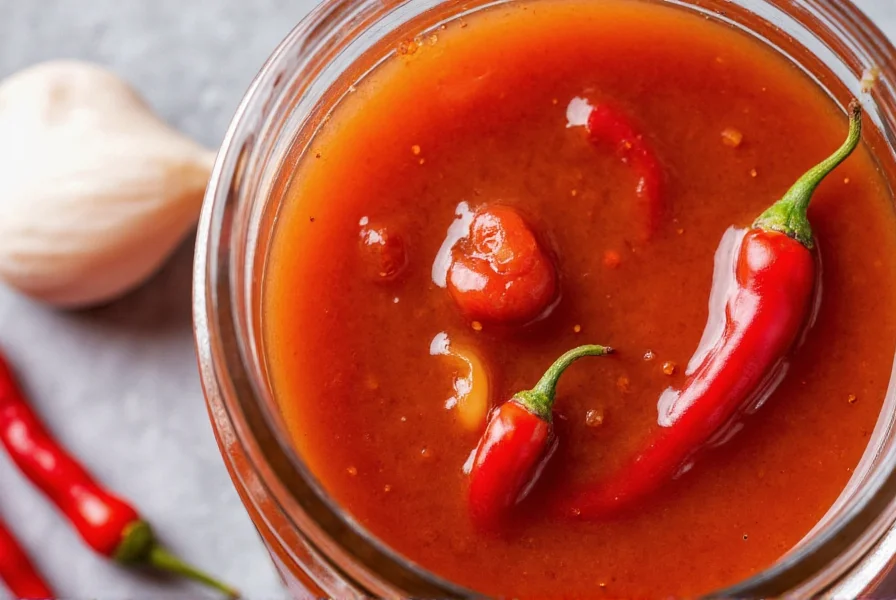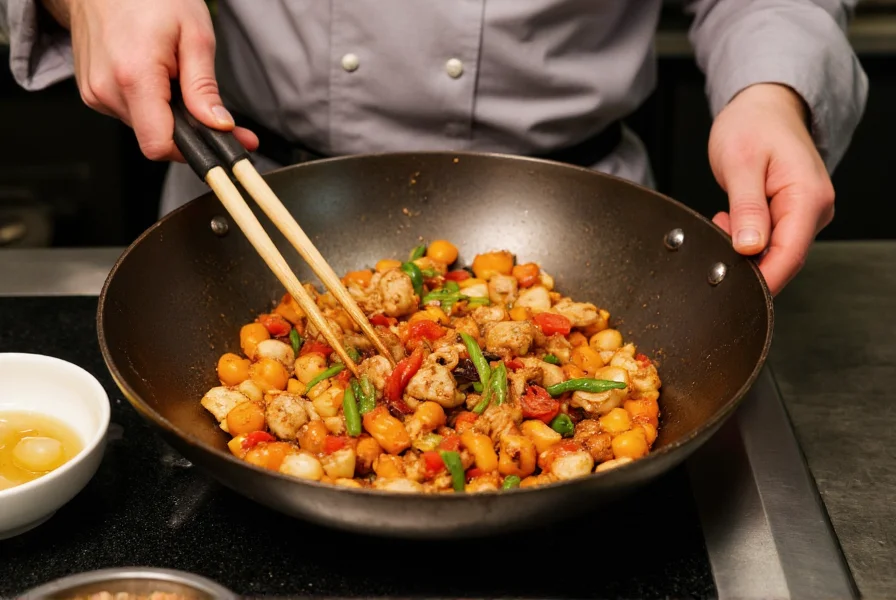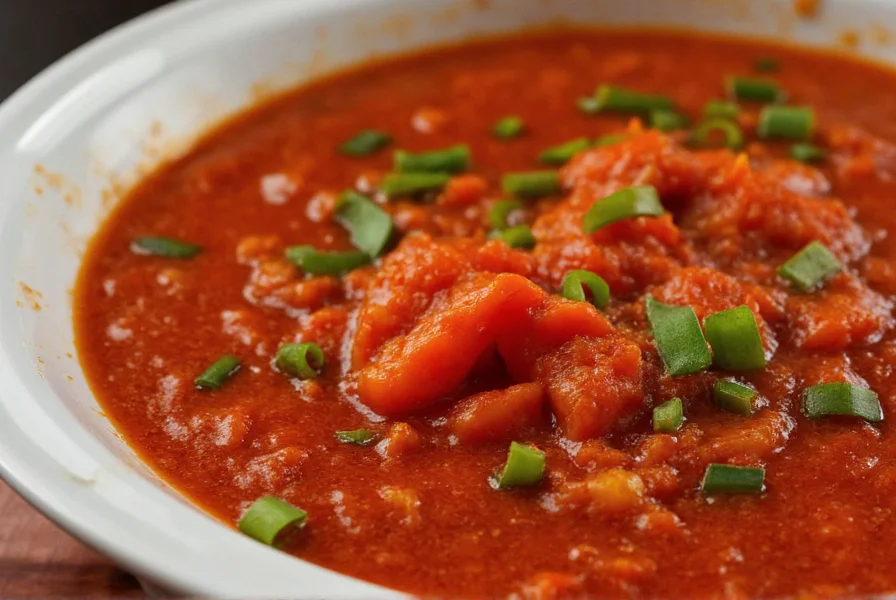Understanding what sets garlic chili sauce apart begins with its fundamental composition. This popular Asian-inspired condiment delivers a distinctive balance of heat and savory garlic flavor that transforms ordinary dishes into restaurant-quality meals. Home cooks and professional chefs alike rely on this sauce for its ability to add complex flavor with minimal effort.
What Defines Authentic Garlic Chili Sauce
True garlic chili sauce contains a high proportion of fresh garlic compared to other chili-based condiments. The ideal ratio typically features garlic as the second most prominent ingredient after chilies. Traditional recipes use red chilies like bird's eye or cayenne peppers, though regional variations exist worldwide. The sauce's texture ranges from smooth puree to chunky preparations with visible garlic pieces.
Unlike many commercial hot sauces that prioritize heat above all, quality garlic chili sauce maintains a harmonious balance where neither the garlic nor chili overpowers the other. The addition of vinegar provides necessary acidity to preserve the sauce while enhancing its bright, fresh characteristics. Sugar content varies significantly between brands and homemade versions, affecting both flavor profile and shelf stability.

Garlic Chili Sauce vs. Similar Condiments
Many consumers confuse garlic chili sauce with related products. Understanding these distinctions helps you select the right sauce for your culinary needs:
| Sauce Type | Garlic Content | Heat Level | hPrimary Uses |
|---|---|---|---|
| Garlic Chili Sauce | High (dominant flavor) | Medium to High | Stir-fries, marinades, dipping sauces |
| Sriracha | Low (background note) | Medium | Drizzling, sandwiches, mixed into mayo |
| Chili Garlic Sauce | Medium (balanced with chili) | High | Asian cooking, noodle dishes, dumpling sauce |
| Chili Oil | Variable (often infused) | Low to Medium | Finishing oil, seasoning base |
The key difference between garlic chili sauce and chili garlic sauce lies in ingredient proportions. While both contain garlic and chilies, garlic chili sauce features garlic as the star ingredient, whereas chili garlic sauce emphasizes the chili component with garlic playing a supporting role. This subtle distinction significantly impacts how each sauce performs in various cooking applications.
Top Culinary Applications for Garlic Chili Sauce
This versatile sauce shines in numerous cooking scenarios. For stir-fry enhancement, add one to two tablespoons during the final minute of cooking to preserve its fresh garlic flavor. When creating marinades, combine garlic chili sauce with soy sauce, ginger, and a touch of honey for meats or tofu. As a dipping sauce base, thin it with rice vinegar and a splash of sesame oil.
Professional chefs frequently use garlic chili sauce as a flavor foundation for soups and noodle dishes. Adding a spoonful to ramen broth creates instant depth, while incorporating it into fried rice provides both heat and garlic complexity. The sauce's acidity makes it particularly effective at cutting through rich, fatty ingredients, making it ideal for pairing with pork belly or duck dishes.

Simple Homemade Garlic Chili Sauce Recipe
Creating your own garlic chili sauce allows complete control over ingredients and heat level. This basic recipe yields a balanced sauce perfect for most applications:
Ingredients:
- 1 cup fresh red chilies (bird's eye or cayenne), stems removed
- 10 large garlic cloves, peeled
- 1/2 cup distilled white vinegar
- 1 tablespoon kosher salt
- 1 teaspoon sugar (optional)
- 1/4 cup water
Instructions:
- Combine all ingredients in a food processor
- Pulse until smooth consistency is achieved
- Transfer to a clean glass jar with tight-fitting lid
- Refrigerate for 24 hours before use to allow flavors to meld
- Store in refrigerator for up to 3 months
For a smoother texture, strain the sauce through a fine mesh sieve after processing. To reduce heat, remove chili seeds before blending. This homemade garlic chili sauce recipe creates a product with noticeably fresher garlic flavor than most commercial versions.
Selecting Quality Commercial Garlic Chili Sauce
When purchasing store-bought garlic chili sauce, examine the ingredient list carefully. The best products list garlic near the beginning, indicating substantial content. Avoid sauces where garlic appears only as 'garlic powder' or 'garlic flavor' near the end of ingredients. Check for artificial preservatives and colors, which often indicate lower quality.
Texture provides another quality indicator. Premium garlic chili sauces typically contain visible garlic pieces rather than being completely smooth. The color should be vibrant red without unnatural orange hues. When shaken, the sauce should flow steadily but not be watery. Properly made commercial garlic chili sauce maintains consistent texture without separation.
Storage Guidelines and Shelf Life
Proper storage significantly impacts garlic chili sauce quality. Commercial products generally remain fresh for 6-12 months unopened. Once opened, refrigerate immediately and use within 3-6 months. Homemade versions require refrigeration and last approximately 3 months.
Always use clean utensils when handling the sauce to prevent contamination. If you notice mold, significant color change, or off odors, discard the product immediately. Freezing in ice cube trays then transferring to freezer bags allows extended storage up to 12 months while preserving flavor quality.
Nutritional Profile and Dietary Considerations
Garlic chili sauce offers minimal calories (approximately 5-15 per tablespoon) with virtually no fat. The primary nutritional benefits come from its garlic content, which contains allicin compounds associated with various health benefits. Most commercial versions contain 100-250mg sodium per serving, making low-sodium options preferable for health-conscious consumers.
For those following specific diets, garlic chili sauce typically fits within gluten-free, vegan, and paleo frameworks. Always verify labels for potential additives that might conflict with dietary restrictions. The natural preservative qualities of vinegar and salt make most garlic chili sauces free from artificial preservatives when properly formulated.
Common Questions About Garlic Chili Sauce
What's the difference between garlic chili sauce and sriracha?
Garlic chili sauce features garlic as the dominant flavor with chilies as secondary, while sriracha emphasizes chili heat with garlic as a background note. Sriracha contains sugar, vinegar, and sometimes fish sauce, creating a sweeter, more complex profile. Garlic chili sauce typically has visible garlic pieces and a sharper, more direct garlic flavor that works better in dishes where garlic should shine.
Can I substitute garlic chili sauce for regular chili sauce in recipes?
Yes, but with adjustments. Since garlic chili sauce has prominent garlic flavor, you'll need to reduce additional garlic in your recipe. For every tablespoon of garlic chili sauce substituted, decrease other garlic ingredients by half. The sauce's vinegar content means you may also need to reduce other acidic components. This garlic chili sauce substitution guide helps maintain recipe balance while incorporating its distinctive flavor.
What dishes work best with garlic chili sauce?
Garlic chili sauce excels in Asian-inspired dishes like stir-fries, noodle bowls, and dumpling dipping sauces. It enhances roasted vegetables, particularly broccoli and green beans. The sauce works wonderfully as a marinade base for chicken, pork, or tofu. For Western applications, try mixing with mayonnaise for sandwiches or adding to pizza sauce. The best garlic chili sauce applications leverage its dual garlic-chili profile to add depth without overwhelming other ingredients.
How can I reduce the heat level of garlic chili sauce?
To reduce heat while preserving flavor, mix equal parts garlic chili sauce with honey or maple syrup. Alternatively, blend with plain Greek yogurt or coconut milk for creamy, milder versions. Adding acid like lime juice can also balance perceived heat. For cooking applications, introduce the sauce gradually during preparation rather than all at once. These garlic chili sauce heat reduction techniques maintain flavor complexity while making the sauce accessible to those sensitive to spice.
Does garlic chili sauce need refrigeration after opening?
Yes, refrigeration is essential after opening to maintain quality and safety. The vinegar content provides some preservation, but the fresh garlic components can degrade at room temperature. Properly refrigerated, opened garlic chili sauce remains safe for 3-6 months. Always check for mold, off odors, or significant separation before using. Following proper garlic chili sauce storage practices ensures maximum shelf life and flavor retention.











 浙公网安备
33010002000092号
浙公网安备
33010002000092号 浙B2-20120091-4
浙B2-20120091-4